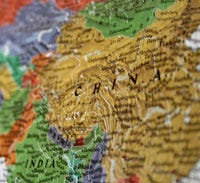“When we talk about 600-lb. gorillas in China, we normally refer to companies like J&J, Abbott, Medtronic, and Boston Scientific—at least in terms of medical device companies,” explained Philip Wang, chief operating officer of Microport (Shanghai), at the beginning of his talk at TCT2011 conference last week. When Wang was invited to speak at the event and was assigned the topic “China: The 600-Pound Gorilla” he first didn’t know what to make of it.
November 17, 2011
 “When we talk about 600-lb. gorillas in China, we normally refer to companies like J&J, Abbott, Medtronic, and Boston Scientific—at least in terms of medical device companies,” explained Philip Wang, chief operating officer of Microport (Shanghai), at the beginning of his talk at TCT2011 conference last week. When Wang was invited to speak at the event and was assigned the topic “China: The 600-Pound Gorilla” he first didn’t know what to make of it.
“When we talk about 600-lb. gorillas in China, we normally refer to companies like J&J, Abbott, Medtronic, and Boston Scientific—at least in terms of medical device companies,” explained Philip Wang, chief operating officer of Microport (Shanghai), at the beginning of his talk at TCT2011 conference last week. When Wang was invited to speak at the event and was assigned the topic “China: The 600-Pound Gorilla” he first didn’t know what to make of it.
But the country is an impressive force to be reckoned with, representing one of the fastest growing healthcare markets in the world, and Wang had a lot to say to back that up. Total healthcare expenditures reached $235 billion in 2009. The country will soon surpass Japan to become the second largest market, Wang said.
The fast growth rate is driven by the nation’s aging population, economic growth, and strong government spending. “Healthcare spending grew at the average rate of 22% from 2005–2009,” Wang said. “Government spending increased medical coverage from 71% of the total population in 2007 to 94% in 2010.”
Historically, China had very high out of pockets expenditures from patients. The proportion of the co-payment dropped from 60% in 2001 to 40% in 2008. “Targetting coverage in rural areas is a centerpiece of ongoing healthcare reform,” Wang said.
The key driver of this growth is the government’s healthcare spending |
The country became the second-largest medical device market in 2010. It reached roughly $15 billion. Hot areas include orthopedics products, imaging systems, neuro and cardiology products. “Angioplasty procedures have grown at the rate of roughly 25% for the past five years,” Wang said. “330,000 procedures were done in 2010. Over 500,000 drug-eluting stents were implanted in that year.”
The key driver of this growth is the government’s healthcare spending, Wang explained. There are more affordable products being provided by local suppliers. But, innovation in China must come at an affordable price, he stressed.
While the country has in the past looked abroad to purchase innovative new products, local manufacturers are gaining ground and can avail themselves of government-sponsored incubators and a huge talent pool of engineers. “A phenomenal trend is that many of the engineers in China have worked in the United States for 20 or 30 years and are coming back and are working for local companies. These are the key assets for us,” Wang said. “They are coming back with a lot of experience. They will tell use the right thing to do and how to avoid mistakes.�”
“Regulatory agencies have an improved understanding of new technology,” Wang added. The country’s regulatory agency, SFDA, works closely with FDA. “That’s a good thing for China. The standards are moving up to an international level, so we can talk on the same language when we have a new product launch in China.”
Image from Flickr theogeo.
You May Also Like
.png?width=300&auto=webp&quality=80&disable=upscale)

